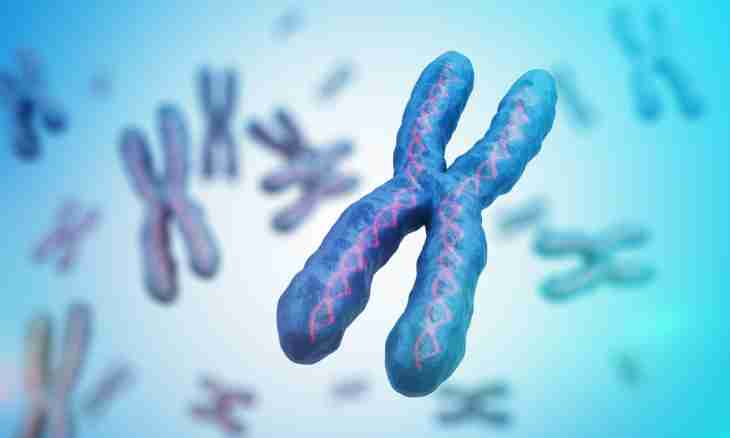Chromosomes (from Greek chroma – color and soma – a body) – nuclear structures of eukaryotic cells in which the most part of hereditary information is concentrated. Their function consists in its storage, realization and transfer.
Prokariota and eukariota
All living organisms share on prokariot and eukariot. The first are the unicells which do not have the issued kernel and other membrane organelles. They are called also "doyaderny". Cages eukariot contain kernels. Plants, animals, mushrooms and protests concern them.
In cages eukariot the kernel is the major structure representing control center of a cage and storage of information on it. More than 90% of cellular DNA are concentrated in a kernel.
In molecules DNA (deoxyribonucleic acid) hereditary information on a cage is written down.
From where chromosomes undertake
In kernel contents – a karioplazma – kernels and chromatin are located. Chromatin represents DNA connected with proteins. Before cell division of DNA it is twisted and forms chromosomes, and nuclear proteins histones go for the correct laying of DNA.
When laying DNA the volume occupied by her decreases many times over. Each chromosome is formed only by one molecule DNA.
What is a set of chromosomes
The set of chromosomes of a cage is called a karyotype. It is unique for each type of living beings. Even if the number of chromosomes coincides (so, at a chimpanzee and potatoes in cages on 48 chromosomes), their form and the building will be all the same various. The somatic cages making fabrics of a metaphyte contain a diploidic, i.e. double set of chromosomes. Each cage got a half of chromosomes from a maternal ovum, and a half – from a fatherly spermatozoon. All pair chromosomes, except for sexual, are absolutely identical each other and are called homologous.
In cells of a human body 23 couples of chromosomes.
In case of haploid set each chromosome is presented in singular. Such set is characteristic of gametes – gametes. So, ova of the woman and spermatozoa of the man contain 23 chromosomes whereas somatic cages – 46.
DNA reduplication
By preparation for cell division each chromosome doubles. It occurs due to reduplication (replication) of DNA. By a rupture of the complementary nitrogenous bases – adenine-thymine and guanine-tsitozina – the fragment of a molecule of "maternal" DNA untwines on two threads. Then by means of DNA polymerase enzyme the nucleotide adapts to each nucleotide of the dispersed threads complementary to it. Two new molecules DNA consisting of one chain of "maternal" DNA and one again synthesized "affiliated" chain are so formed. They are completely identical.

